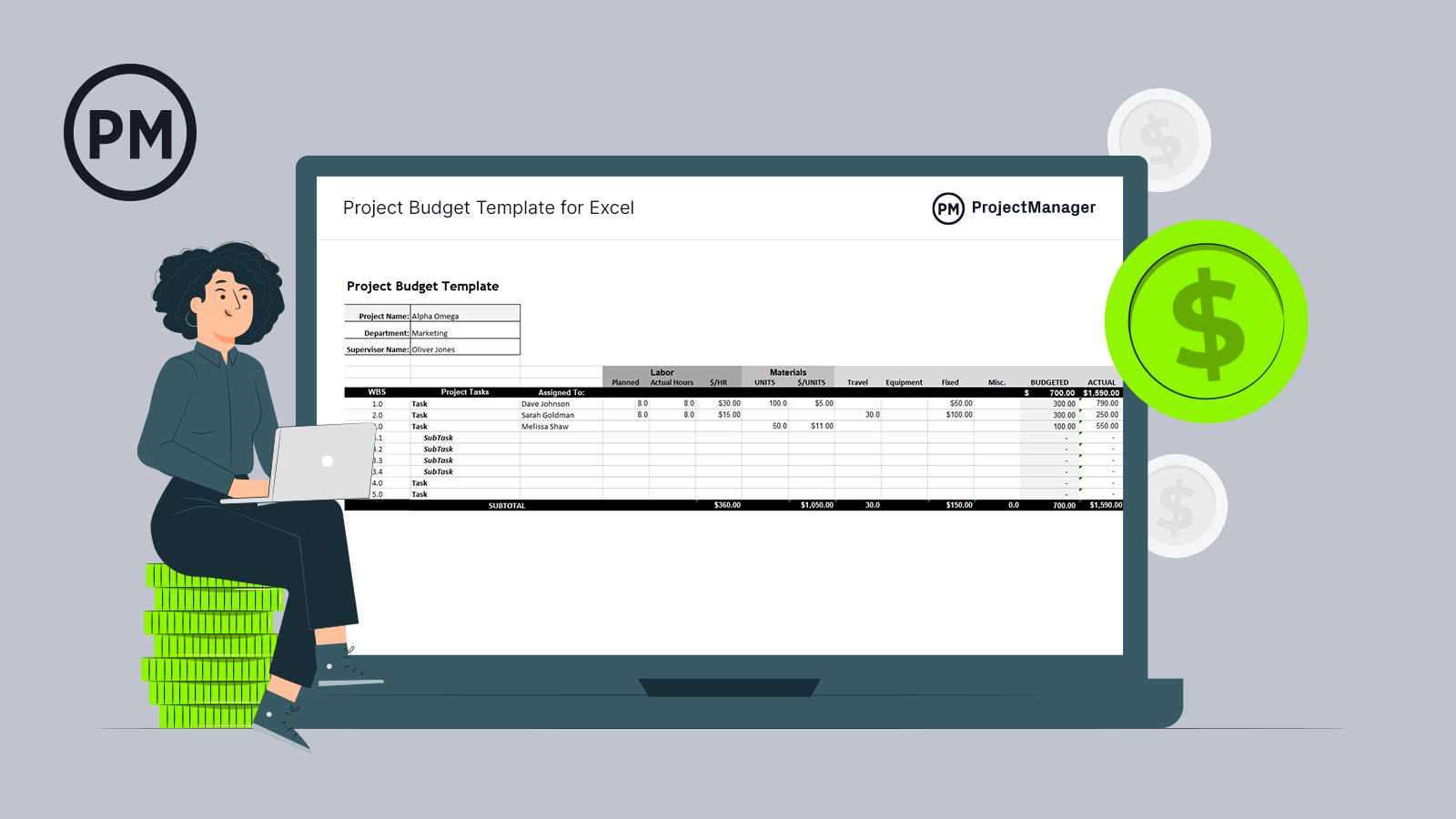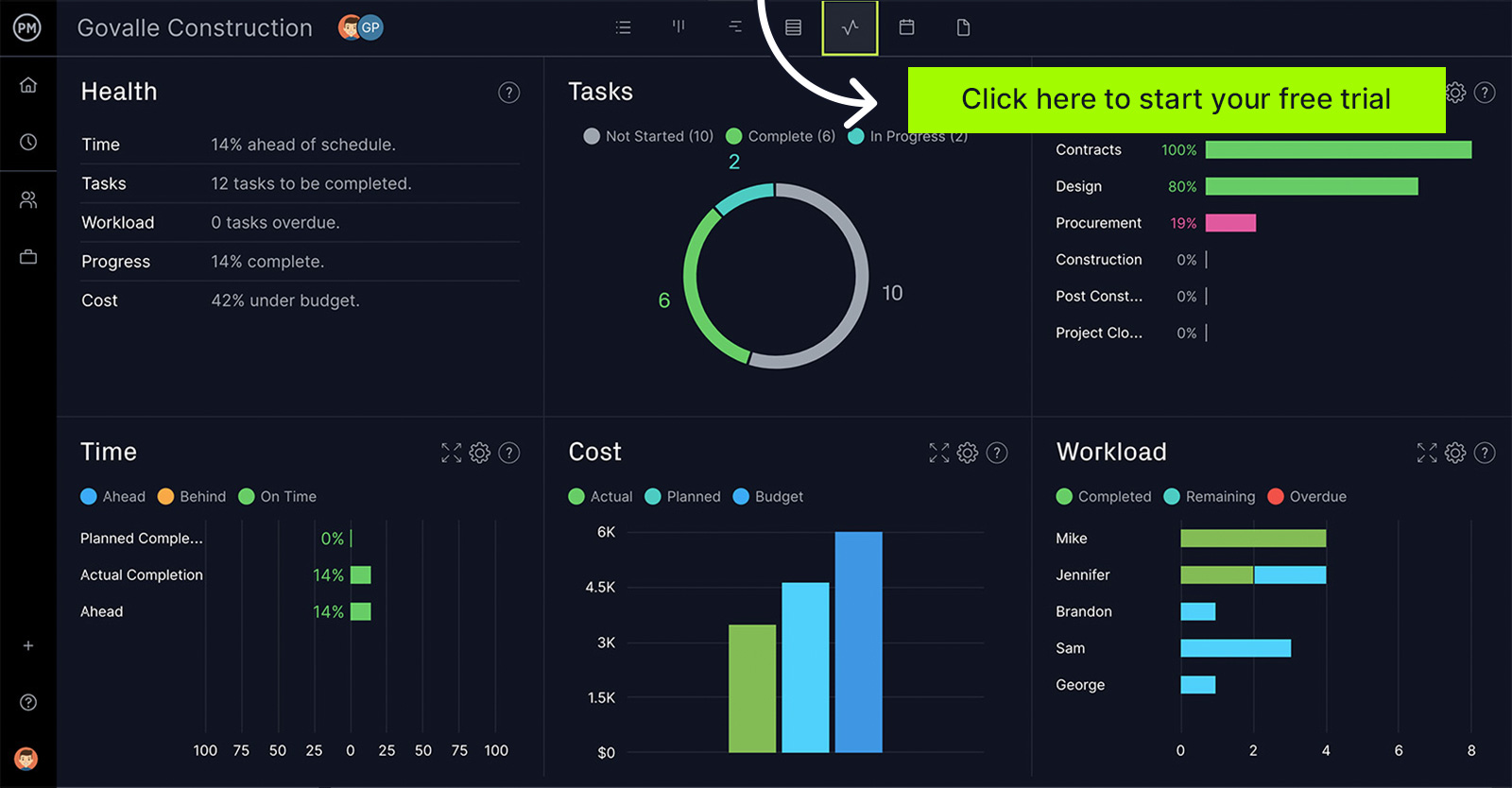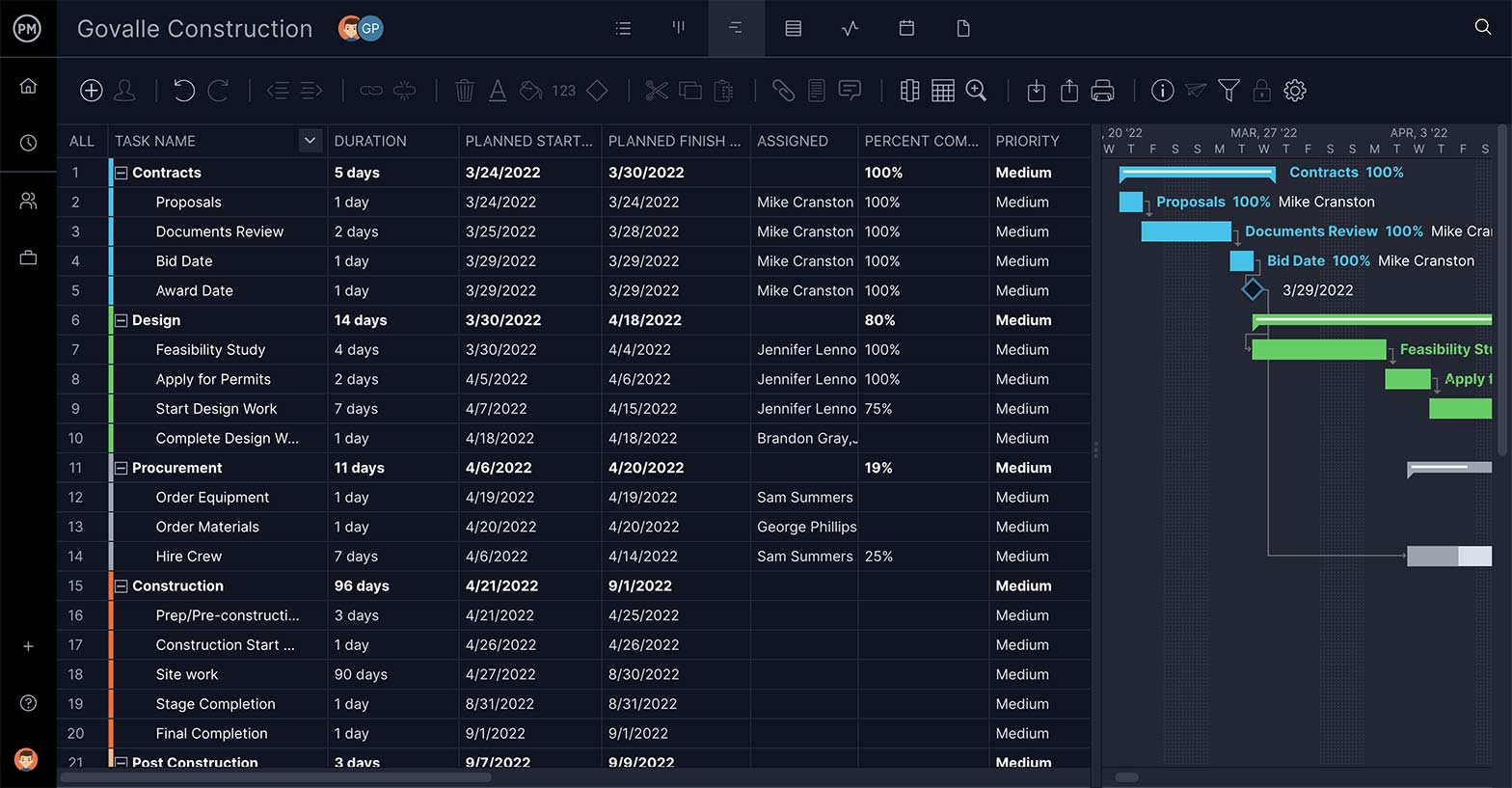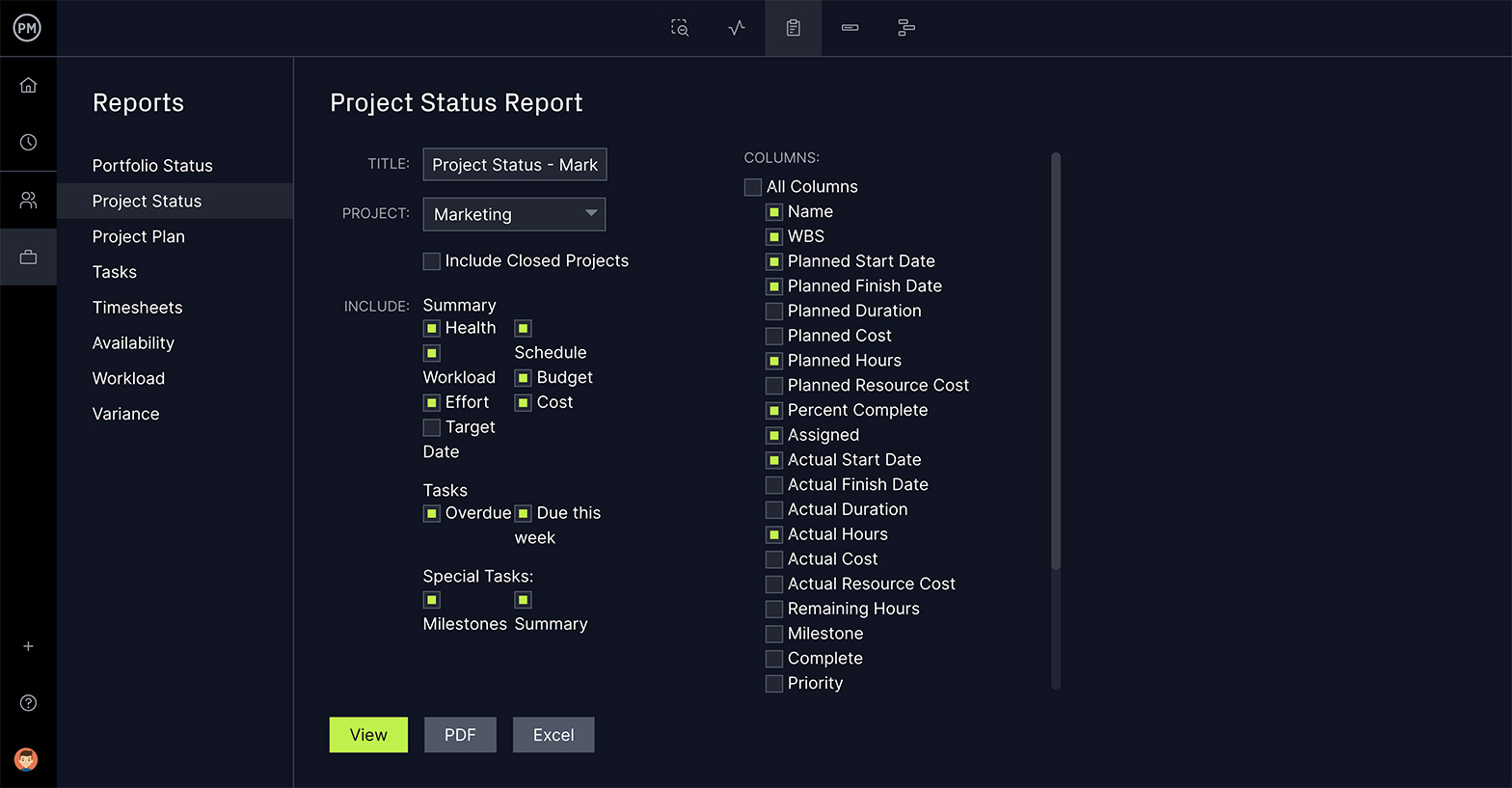Projects cost money and therefore demand project expense tracking. Being able to manage and track expenses is what keeps the project within a budget. Stakeholders are not likely to consider the project a success if it costs them too much. Remember the triple constraint: cost, scope and time. You have to manage all three, giving and taking from one to the other.
What Is a Project Expense?
A project expense is the cost of what you need to complete a project. You need to cover all the expenses associated with your project before executing that project. This occurs during the project planning phase when you’re developing a project budget.
There are two main types of expenses that you need to know as you track your project costs. They are direct expenses and indirect expenses. Direct expenses for your project are those that are directly tied to the project, such as specialized software, contractor hours, travel and meal expenses, mileage, etc. Note that direct costs can be fixed or variable.
Indirect project costs are those that aren’t linked to the project. These expenses still must be paid. They are important as often project managers will overlook them when setting rates or creating bids for projects. Some examples of indirect costs include rent, support staff salaries, utilities, software licensing fees, advertising and promotion, office supplies, accounting and lawyer fees, etc. Indirect costs can also be fixed or variable.

Get your free
Project Budget Template
Use this free Project Budget Template for Excel to manage your projects better.
How to Track Project Expenses & Costs
The last thing you want is to have your pay or bonus cut because you didn’t keep to the project budget, as some have learned from experience. To avoid that, let’s discuss six ways to track your project’s expenses.
The following tutorial video addresses costs, specifically project expenses. You’re going to have these expenditures, but to avoid wildly overspending, you must have a system in place to monitor and track them. That’s the only way to control your expenses and in so doing stay on budget. Watch and learn how to manage and track your project expenses.
1. Establish Cost Tracking Systems
The first rule is to have a system in place to deal with your expenses and have the capacity to track them. This can be a robust project management software with dynamic functionality or something more static like an Excel sheet.
Whatever you choose, you need at least some sort of format or log to collect cost management data and identify who is spending what and when. Most project managers use software equipped with a project dashboard that allows them to check the overall status of a project.
Project management dashboards usually display cost, task and time tracking data. Without such a system in place there’s no way to know where your money is going.
Using project management software offers you more transparency into how you’re spending your project expenses. ProjectManager is cloud-based work and project management software that tracks your costs in real time. Our live dashboard requires no wasted time setting it up like some lightweight tools. It’s always collecting project data, crunching the numbers and displaying six project metrics including costs in easy-to-read graphs and charts. Get started with ProjectManager today for free!

2. Provide Online Access
The next logical step is to have a system that is online. Being able to gain access to your tracking system anywhere and at any time is more than just a luxury. It has become an essential part of any project management plan.
You or your team might be working in the field or off-site somewhere. An online tool gives you access to the system, so you can add expenses there and then. Waiting until you’re back in the office means it’s more likely that something will fall through the cracks.
3. Identify Budget Items
A project tracking system is important, but it’s useless until you have identified the items in your budget. You need to know where the costs are going. This list varies from project to project, industry to industry, but detailing it is key to every project. To create a budget, you’ll need to estimate the cost of all the tasks that make up your project, including all the resources needed to execute them. Our estimate template facilitates this process.
For example, you’re going to spend money on resources, such as equipment and your team; you might have real-estate costs, legal and travel expenses. All these items must be identified and listed in order for you to track their expenses. You can download our free project budget template if you need help getting started.
4. Create a Project Budget
You can probably see where this is going. It’s all part and parcel to creating a budget. You need to have your fixed and variable costs and expenses figured out before you can track them. The budget will be the umbrella under which all your project expenses will be covered.
Of course, once you’ve created a budget, you have to get it approved. This will allow you to see up parameters for your expenses and help track by letting you know what is permissible to spend and when those costs are going beyond what has been earmarked for the project.
5. Assign Someone to Track Expenses
A system, budget and everything related to managing your project costs is all for naught if there is not a person in charge of overseeing this process. You must assign someone from the team who is tasked with operating the system you have devised to track expenses.
This person will become invaluable. They’ll be on the front lines of your actual budget and can raise the red flag when costs are exceeding what has been approved for the budget expenses. You want someone trustworthy to own this process.
6. Track and Control Expenses In Real-time
Finally, to streamline the cost management process and make it more effective, you want to have an online tool. We mentioned online project management software above, and one of the advantages it has over Excel is that it’s constantly updated and reflects your actual spending on expenses. Therefore, if you notice a spike in spending, you not only have identified it quickly but now can address it before you leak value and risk busting your budget.
Project Budget Template
Our free project budget template for Excel is a place to capture all the financial details that pertain to executing your project. It can also help you monitor those costs once you start executing your tasks to help you stay within your budget.

Project Expense Tracking Templates
Project expense management isn’t easy. If you’re not ready to upgrade to project management software, we have dozens of free project management templates you can use. ProjectManager is the online hub for everything work and project management. Here are a few of the free project tracking templates for Excel we offer.
Project Estimate Template
Before you can create a project budget and track project expenses, you’ll need to estimate the costs of your project. Our free project estimate template for Excel helps you list down all the costs related to your project resources such as labor, materials and equipment.
Project Dashboard Template
Another tool to track your expenses is our free project dashboard template for Excel. Unlike our software, you have to input data to get the output on your project metrics, but if you’re not using project management software to track your expenses, then you need this free dashboard template. It monitors costs, but also tasks and workload.
Project Task Tracker Template
It’s executing tasks where expenses are spent. If you don’t keep to your schedule and extend the duration of your tasks, you’re going to spend more money. Therefore, our free project task tracker template for Excel is helpful because it describes each task, notes any dependent tasks, who is assigned to that task, the priority, start and end dates and the planned end date.
How ProjectManager Tracks Project Expenses
ProjectManager is a cloud-based work and project tracking software that updates in real time to help you accurately track project expenses. Our tool has features to build and monitor your budget to keep track of what you’re spending and the status of your project.
Build Budgets and Track Expenses with the Gantt
Easily add budget info to your project, including budget expenses on our Gantt chart view. Add fixed expenses that don’t have hourly rates. Add planned costs and set the baseline to capture your budget so you can then compare it with your actual cost once the project has started. You can then see in real time whether you’re on track or overspending and respond quickly before costs get out of hand.

Create Project Reports in Minutes
One-click reports make it easy to get deep into the data and track expenses down to the task level. Get reports on the project status that show which tasks are overdue, show your costs to date, planned task costs and planned resource costs. Filter those reports to just show the expense costs you’re interested in, then easily share them with stakeholders to keep the updated.

Expenses change over the course of a project and we make it easy to revise your budget during the project. You need the flexibility to adjust to the changing constraints in your project and our software lets you revise in real time. Your budget isn’t chiseled in stone or, worse, on a spreadsheet. Our tool makes sure your expense forecast is accurate.
ProjectManager is award-winning work and project management software that connects hybrid teams and tracks their expenses no matter where they work, how they work or what they do in your organization. Improve your project expense tracking today—get started for free with ProjectManager.


